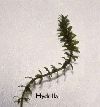I have a plan for 2 ponds connected by a waterfall on the side of a steep
north facing slope. I have 2 different pond builders bidding on the job,
one uses strictly concrete and one a liner Aquascape system. While clearing
the site of grasses this weekend I noticed a gopher housing project going on
very close to pond site. Should I not even consider using a liner? Will
the rocks that completely cover the liner and weight of the water be enough?
Or could we line it with carpet or wire? I am learning a lot but didn't see
much about the darn rodents!
Answers
Hi,
When I built our pond (3 yrs. ago-3,000 gal.) I put lots of chicken wire down
first, and then old carpet before I put the heavy duty liner inside. I
haven't had any problems with gophers or leaks :)
We have no gophers (that I know of) here in New Orleans, but the chicken
wire sounds good. Just a note of caution, though. The Aquascapes system does
not build the pond above grade and the rocks are a PITA when pond cleaning
time comes every year. Unless you are under a tree, you do not need a
skimmer and most probably don't need a biofilter either. Don't let them sell
you (for a great deal of $$) things you don't need. Concrete is most always
a bad idea because it isn't elastic, won't move with the ever moving ground
and will crack at some time, always sooner rather than later.
Gopher removal:
Unless you intend to tame the gophers, (burrowing North American RODENT according to definition in the dictionary) I think you should first check with Wildlife Commission to see if (1) you have rights to move them to a more suited environment, (2) if they are prone to mark their territory and return, (3) have the Animal Resque League (police) trap & move them to a m
Jore fitting area.
As far as construction of your pond, CONCRETE DOESN'T HOLD WATER! So, if this guy/gal doesn't tell you it will be painted with Elastomeric to wet seal, then two coats of Ramuc (black/blue/white) to fish proof..........RUN!
AquaScape Design doesn't work in Mississippi (differing opinion from manufacturers & some designers not in my area) without the addition of special blends of bacteria (8 or more strains targetting string algae). I also prefer UV lights (some like the natural approach/not me/too busy to mess with) to keep water crystal clear & as healthy as it can be. Add Magnitizer (RED one) to target string algae, with right formula of fish & plants. Also, N E V E R plant your vegetation in a rock bottom pond!!!
Weight of water and stones will not hold down liner if trouble comes.


















































